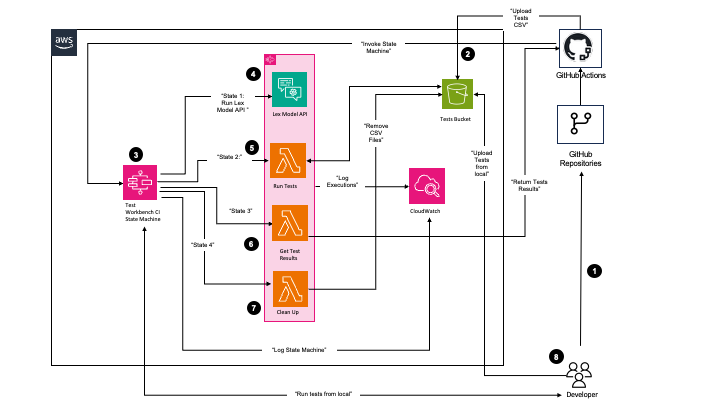Artificial Intelligence
Category: Amazon DynamoDB
Principal Financial Group accelerates build, test, and deployment of Amazon Lex V2 bots through automation
In the post Principal Financial Group increases Voice Virtual Assistant performance using Genesys, Amazon Lex, and Amazon QuickSight, we discussed the overall Principal Virtual Assistant solution using Genesys Cloud, Amazon Lex V2, multiple AWS services, and a custom reporting and analytics solution using Amazon QuickSight.
Voice AI-powered drive-thru ordering with Amazon Nova Sonic and dynamic menu displays
In this post, we’ll demonstrate how to implement a Quick Service Restaurants (QSRs) drive-thru solution using Amazon Nova Sonic and AWS services. We’ll walk through building an intelligent system that combines voice AI with interactive menu displays, providing technical insights and implementation guidance to help restaurants modernize their drive-thru operations.
Accelerating AI innovation: Scale MCP servers for enterprise workloads with Amazon Bedrock
In this post, we present a centralized Model Context Protocol (MCP) server implementation using Amazon Bedrock that provides shared access to tools and resources for enterprise AI workloads. The solution enables organizations to accelerate AI innovation by standardizing access to resources and tools through MCP, while maintaining security and governance through a centralized approach.
Building a custom text-to-SQL agent using Amazon Bedrock and Converse API
Developing robust text-to-SQL capabilities is a critical challenge in the field of natural language processing (NLP) and database management. The complexity of NLP and database management increases in this field, particularly while dealing with complex queries and database structures. In this post, we introduce a straightforward but powerful solution with accompanying code to text-to-SQL using a custom agent implementation along with Amazon Bedrock and Converse API.
A generative AI prototype with Amazon Bedrock transforms life sciences and the genome analysis process
This post explores deploying a text-to-SQL pipeline using generative AI models and Amazon Bedrock to ask natural language questions to a genomics database. We demonstrate how to implement an AI assistant web interface with AWS Amplify and explain the prompt engineering strategies adopted to generate the SQL queries. Finally, we present instructions to deploy the service in your own AWS account.
How Pattern PXM’s Content Brief is driving conversion on ecommerce marketplaces using AI
Pattern is a leader in ecommerce acceleration, helping brands navigate the complexities of selling on marketplaces and achieve profitable growth through a combination of proprietary technology and on-demand expertise. In this post, we share how Pattern uses AWS services to process trillions of data points to deliver actionable insights, optimizing product listings across multiple services.
Accelerate your financial statement analysis with Amazon Bedrock and generative AI
In this post, we demonstrate how to deploy a generative AI application that can accelerate your financial statement analysis on AWS.
Automate Amazon Bedrock batch inference: Building a scalable and efficient pipeline
Although batch inference offers numerous benefits, it’s limited to 10 batch inference jobs submitted per model per Region. To address this consideration and enhance your use of batch inference, we’ve developed a scalable solution using AWS Lambda and Amazon DynamoDB. This post guides you through implementing a queue management system that automatically monitors available job slots and submits new jobs as slots become available.
Improve employee productivity using generative AI with Amazon Bedrock
In this post, we show you the Employee Productivity GenAI Assistant Example, a solution built on AWS technologies like Amazon Bedrock, to automate writing tasks and enhance employee productivity.
Scalable intelligent document processing using Amazon Bedrock
In today’s data-driven business landscape, the ability to efficiently extract and process information from a wide range of documents is crucial for informed decision-making and maintaining a competitive edge. However, traditional document processing workflows often involve complex and time-consuming manual tasks, hindering productivity and scalability. In this post, we discuss an approach that uses the […]









